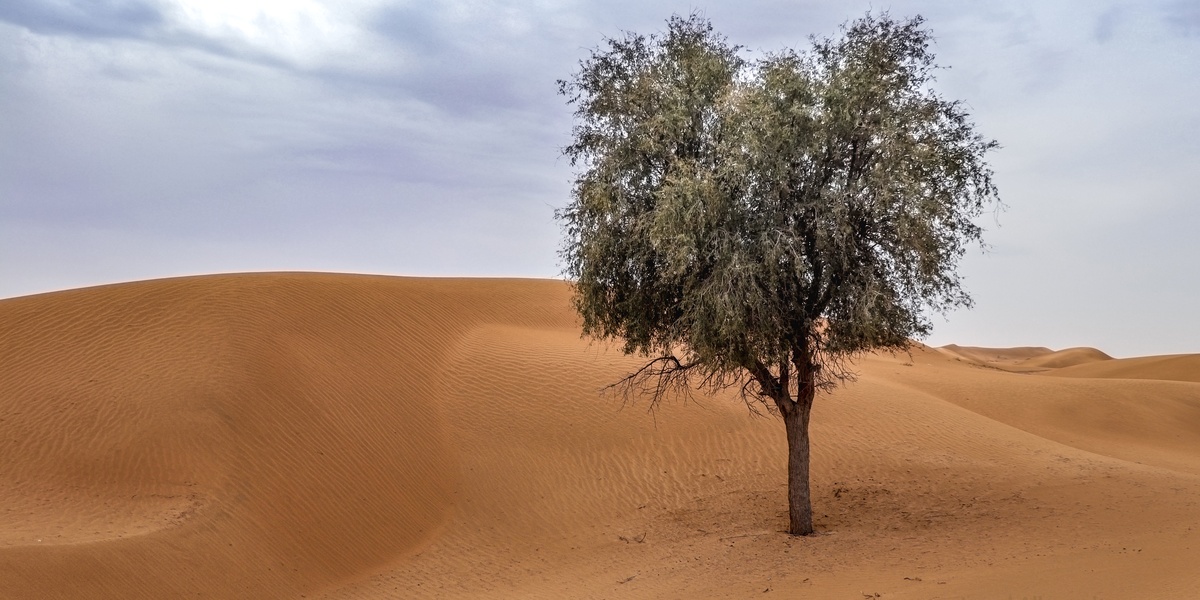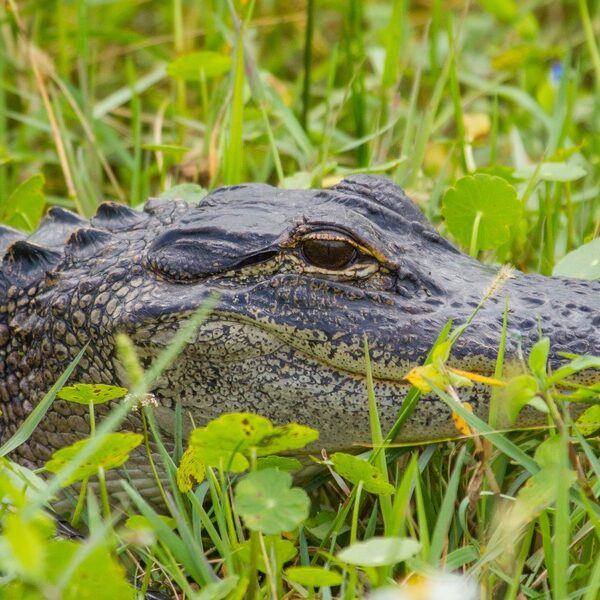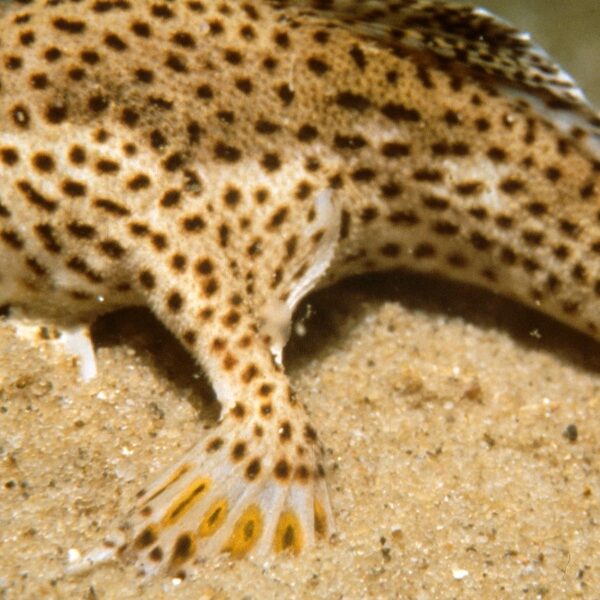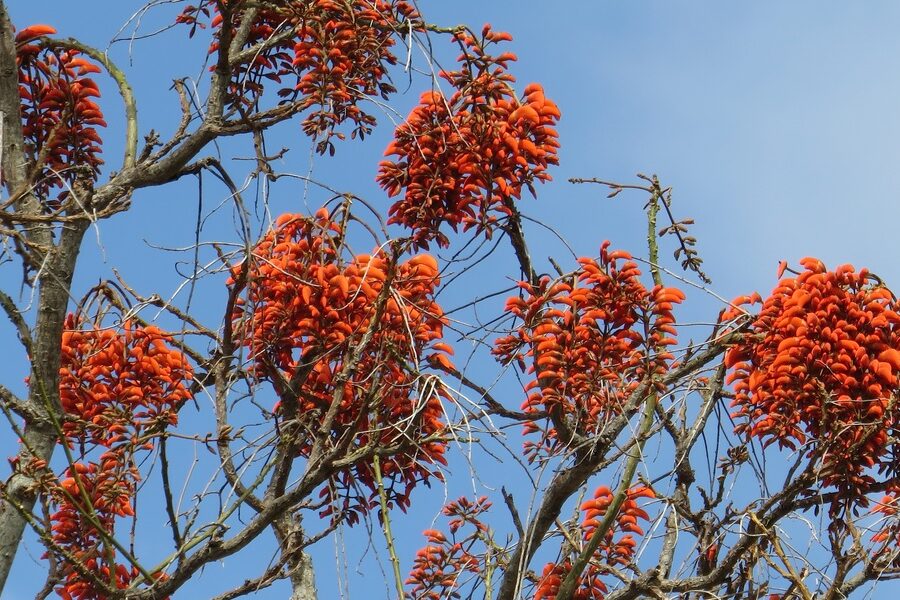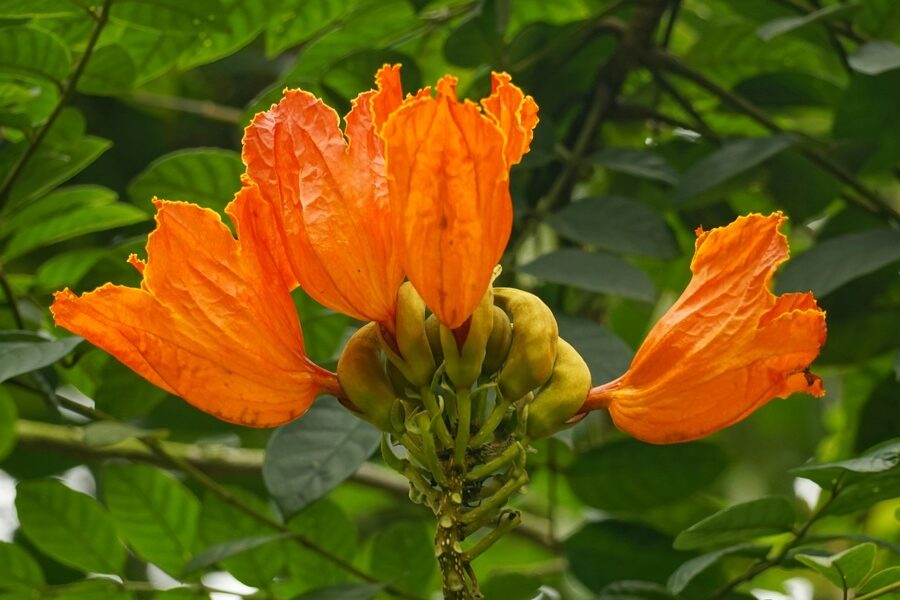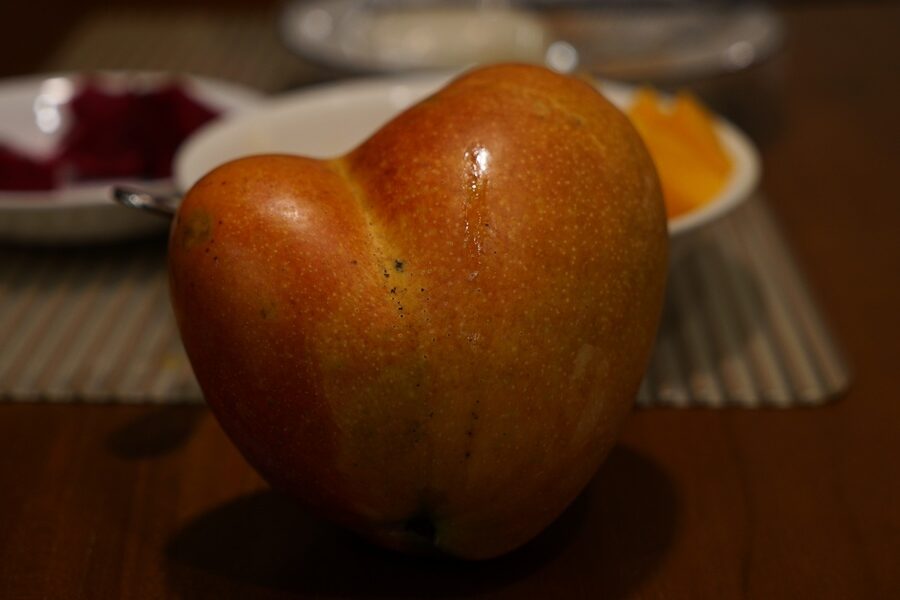The United Arab Emirates, often celebrated for its dazzling cities and vast desert landscapes, also holds a hidden treasure of natural beauty: its resilient flora. Despite the challenging arid environment, a surprising array of plant life thrives here, intricately adapted to the unique ecological conditions, from coastal salt flats to mountain wadis.
To help uncover this fascinating biodiversity, we’ve compiled a detailed resource. There are exactly 47 Plants of the United Arab Emirates meticulously listed, showcasing a remarkable range from the resilient Aerva to the distinctive Wormwood. For each entry, you’ll find below key information organized by its Scientific Name, Habitat, and Notable Use.
What types of plants are typically found thriving in the United Arab Emirates?
The flora of the UAE is highly adapted to its arid and semi-arid conditions, including deserts, wadis, and coastal areas. You’ll commonly find drought-tolerant shrubs, grasses, and succulent plants, many of which are halophytes capable of growing in saline soils. Endemic species are also present, uniquely evolved for the local climate and often playing crucial roles in the desert ecosystem, providing food and shelter for local wildlife.
Why is understanding the native flora of the UAE important?
Understanding the native plant life is vital for several reasons. These species are integral to the ecosystem, preventing soil erosion, supporting local wildlife, and maintaining biodiversity. They also hold significant cultural and traditional value, often used in local medicine, crafts, or as food sources for centuries. Conservation efforts rely heavily on knowing what plants exist and where, helping to protect these unique natural resources for future generations.
Plants of the United Arab Emirates
| Common Name | Scientific Name | Habitat | Notable Use |
|---|---|---|---|
| Ghaf | Prosopis cineraria | Desert, wadi, oasis | Shade, fodder, soil stabilization |
| Date palm | Phoenix dactylifera | Oasis, cultivated naturalized | Food (dates), cultural, shade |
| Grey mangrove | Avicennia marina | Coastal mangrove, tidal flats | Coastal protection, fish nursery |
| Umbrella thorn | Vachellia tortilis | Desert, wadi | Shade, forage for camels and goats |
| Salam | Vachellia ehrenbergiana | Rocky plains, wadis | Fodder, drought-tolerant shrub |
| Mesquite | Prosopis juliflora | Disturbed lands, coastal plains | Firewood, nitrogen fixer, invasive |
| Arfaj | Rhanterium epapposum | Sand dunes, desert plains | Traditional medicine, sand stabilizer |
| Sodom apple | Calotropis procera | Desert, roadsides | Medicinal, fiber, toxic latex |
| Bitter apple | Citrullus colocynthis | Sand plains, gravelly soils | Traditional medicine, drought-tolerant melon |
| Dune grass | Panicum turgidum | Sand dunes | Sand stabilization, fodder for camels |
| Arta | Calligonum comosum | Mobile dunes, sandy plains | Dune fixation, forage |
| Desert thorn | Lycium shawii | Wadis, plains, coastal slopes | Hedge, fodder, medicinal fruit |
| Sidr | Ziziphus spina-christi | Oases, wadis | Edible fruit, shade, medicinal |
| Jujube | Ziziphus nummularia | Sandy plains, dunes | Fodder, erosion control, fruit |
| Toothbrush tree | Salvadora persica | Coastal, inland plains | Traditional oral hygiene, medicinal uses |
| Nitre bush | Nitraria retusa | Sabkha, saline flats | Salt tolerant, forage, erosion control |
| Suaeda | Suaeda fruticosa | Salt flats, sabkhas | Halophyte shrub, forage for wildlife |
| Rimth | Haloxylon salicornicum | Dune and gravel deserts | Forage, dune stabilizer |
| Athel tamarisk | Tamarix aphylla | Wadis, coastal areas, disturbed sites | Windbreak, shade, salt tolerant |
| Desert cotton | Aerva javanica | Plains, dunes, wadis | Fodder, traditional medicine, pioneer plant |
| Harmal | Rhazya stricta | Rocky and gravelly plains | Medicinal alkaloids, common desert shrub |
| Puncture vine | Tribulus terrestris | Disturbed ground, wadis | Traditional remedy, thorny nuisance for animals |
| Balsam spurge | Euphorbia balsamifera | Coastal plains, rocky ground | Salt-tolerant shrub, traditional uses; sap is irritant |
| Sea daffodil | Pancratium maritimum | Sandy beaches, coastal dunes | Showy flowers, dune stabilization, pollinator resource |
| Common reed | Phragmites australis | Freshwater marshes, wetlands | Habitat for birds, erosion control, traditional thatching |
| Sand grass | Stipagrostis plumosa | Dunes and sandy soils | Drought-tolerant grass, stabilizes sand and provides forage |
| Tetraena | Tetraena qatarensis | Sabkha, rocky saline flats | Extremely salt-tolerant shrub common on salty flats |
| Saltbush | Atriplex leucoclada | Sabkha, saline soils | Forage, soil reclamation |
| Seagrass (paddleweed) | Halophila ovalis | Shallow coastal waters, seagrass beds | Fish nursery, seabed stabilization, carbon sink |
| Turtle grass | Thalassia hemprichii | Shallow reefs and bays | Turtle grazing, biodiversity hotspot, seagrass meadow |
| Shoalgrass | Halodule uninervis | Intertidal seagrass beds | Fast-growing seagrass, supports fisheries |
| Saltwort | Salsola imbricata | Desert plains and sabkha | Salt-tolerant shrub, forage for livestock |
| Caper bush | Capparis decidua | Rocky and desert plains | Edible buds, traditional food and medicine |
| Sabkha grass | Aeluropus lagopoides | Sabkha and salt marshes | Halophytic grass, stabilizes salty soils |
| Saltgrass | Sporobolus spicatus | Rocky and sandy plains | Perennial grass, forage and erosion control |
| Velvet vine | Pergularia tomentosa | Sand plains, wadis | Traditional medicine; climbing perennial with milky latex |
| Maerua | Maerua crassifolia | Desert plains and wadis | Fodder, edible fruits, traditional medicine |
| Caper | Capparis spinosa | Rocky slopes, wadis | Pickled buds, condiment, medicinal uses |
| Ochradenus | Ochradenus baccatus | Gravel plains and wadis | Edible fruits for wildlife, desert-adapted shrub |
| Aerva | Aerva lanata | Sandy plains, wadis | Traditional medicine; cottony-white seed heads |
| Dune stabilizer | Leptadenia pyrotechnica | Dunes and sandy plains | Dune stabilization, traditional medicine |
| Desert broomrape | Cistanche tubulosa | Desert plains, parasitic on roots of shrubs | Parasitic medicinal plant prized in traditional remedies |
| Wormwood | Artemisia sieberi | Rocky slopes and wadis | Aromatic shrub, traditional remedies and forage |
| Sedge | Cyperus rotundus | Wet margins, irrigated fields | Common sedge weed; medicinal tubers |
| Snake rush | Juncus acutus | Salt marshes, coastal margins | Tough rush stabilizing shores and providing habitat |
| Spiny indigo | Indigofera spinosa | Wadis and plains | Nitrogen-fixing shrub, traditional remedies |
| Blister dock | Rumex vesicarius | Disturbed soils, wadis | Edible leaves in some cultures, annual herb |
Images and Descriptions
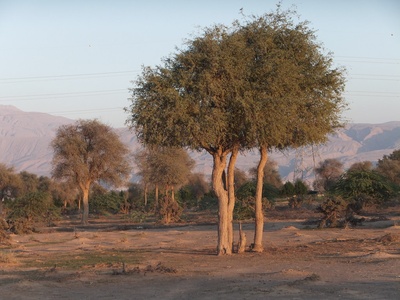
Ghaf
Iconic desert tree offering deep shade and nutritious pods for livestock. It stabilizes soils, supports biodiversity in oases, and holds strong cultural significance across the UAE’s traditional landscapes.

Date palm
Tall perennial cultivated and naturalized around oases; produces nutrient-rich dates, provides shade and building material, and forms the backbone of traditional Emirati agriculture and settlement patterns.
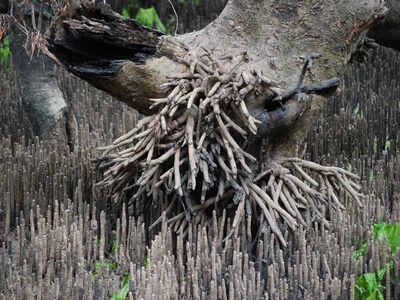
Grey mangrove
Hardy mangrove forming dense stands along sheltered coasts and tidal flats. It protects shorelines from erosion, creates vital fish and crustacean nurseries, and supports coastal biodiversity and fisheries.
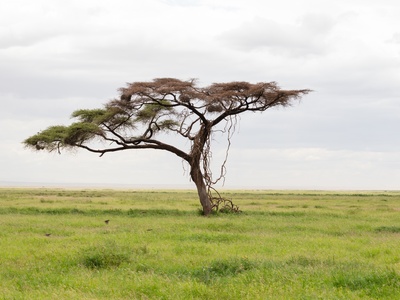
Umbrella thorn
Widespread thorny acacia with a flattened crown. It provides vital shade in open deserts, nutritious browse for livestock, and contributes to nitrogen fixation and soil improvement in arid ecosystems.
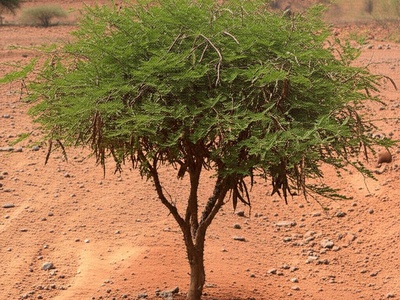
Salam
Compact thorn tree adapted to rocky and gravelly soils. Produces small leaves and pods used as emergency fodder, tolerates extreme drought and helps stabilize fragile soils.
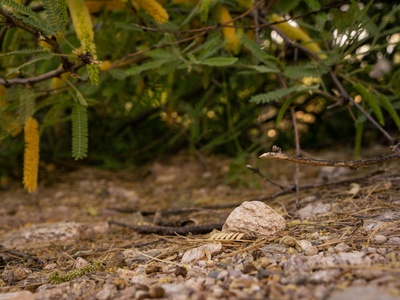
Mesquite
Introduced mesquite that has naturalized widely. It fixes nitrogen and provides wood, but can become invasive, forming dense thickets that alter native desert habitats and water availability.
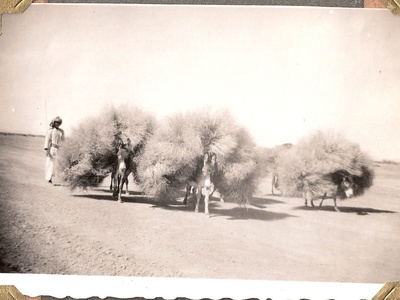
Arfaj
Low, fragrant shrub common on sandy plains and dunes. Nationally valued for stabilizing sand, supporting invertebrates, and traditional medicinal uses in Bedouin culture.

Sodom apple
Shrubby plant with milky, toxic latex and large pale flowers. Used in folk medicine and for fibers; its sap is a skin irritant and requires caution in handling.
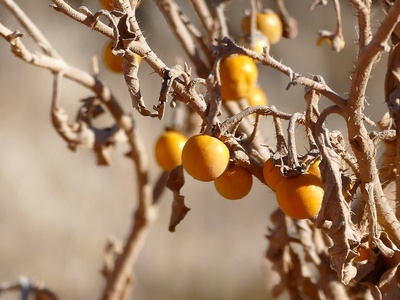
Bitter apple
Sprawling vine producing small bitter fruits. A tough desert melon used historically in traditional remedies; highly drought-tolerant and common on sandy, gravelly ground.
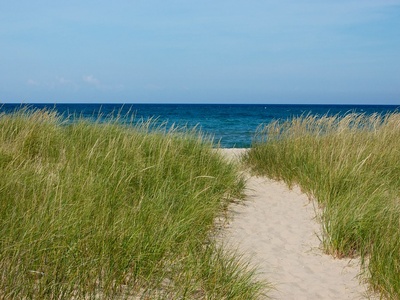
Dune grass
Tufted perennial grass that anchors shifting dunes. Provides valuable seasonal forage for camels and other grazing animals and plays a key role in dune ecosystem stability.
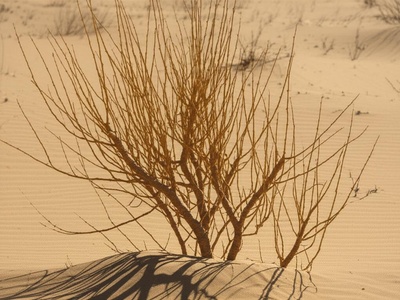
Arta
Leafless, jointed shrub adapted to shifting sands. Its deep roots stabilize dunes and it provides occasional browse for camels and wild herbivores.
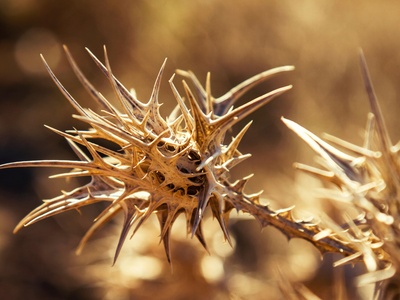
Desert thorn
Spiny shrub with small orange-red fruits eaten by people and wildlife. Used for hedges, livestock fodder, and simple traditional medicines; tolerant of arid conditions.
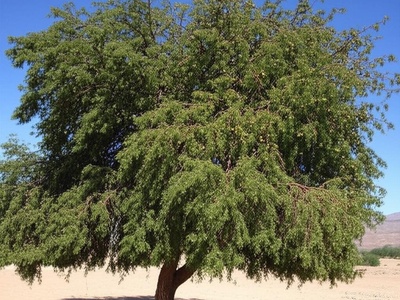
Sidr
Small to medium tree bearing sweet edible fruits. Valued for shade, traditional remedies, nectar for bees, and as a hardy component of oasis vegetation.
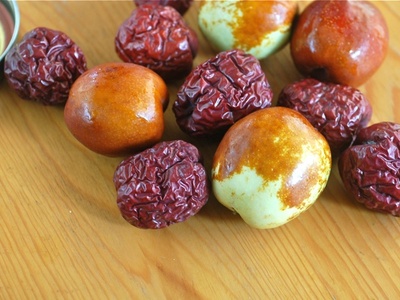
Jujube
Low spreading shrub producing small edible fruits and dense root systems that help bind sand. Important for erosion control and as fodder during dry seasons.
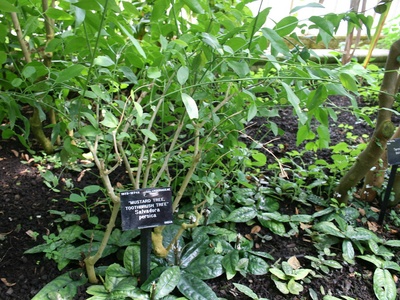
Toothbrush tree
Small tree whose twigs are used as traditional toothbrushes (miswak). Leaves and fruits have medicinal uses; species tolerates salt and arid soils.
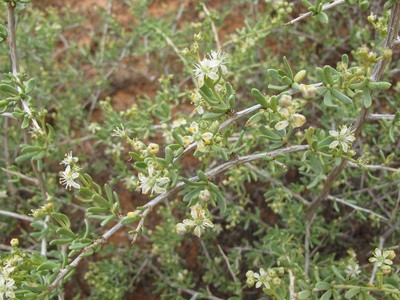
Nitre bush
Low, salt-tolerant shrub common on saline flats and sabkhas. It stabilizes salty soils, offers forage to wildlife, and signals high-salinity habitats along coasts and wadis.

Suaeda
Succulent salt-tolerant shrub thriving on sabkhas and saline soils. Important for coastal ecology, providing habitat and forage for birds and other wildlife in salt-affected areas.
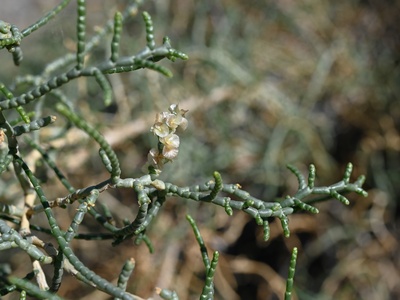
Rimth
Leafless, shrubby halophyte with deep roots. Key in stabilizing dunes and providing sparse but nutritious browse for camels and desert herbivores.
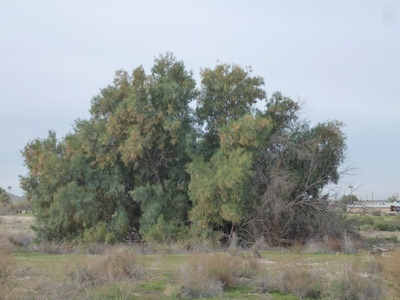
Athel tamarisk
Hardy, salt-tolerant tree often found near wadis and coastal margins. Provides shade and wind protection, but can alter soil salinity and water regimes when abundant.
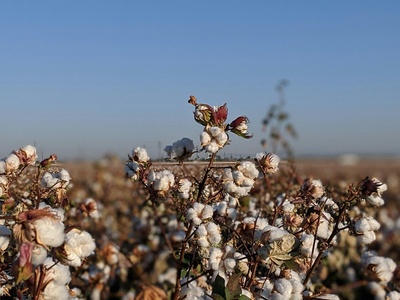
Desert cotton
Soft, hairy perennial with showy seed heads. A pioneer species on disturbed ground, used as emergency forage and in traditional remedies.
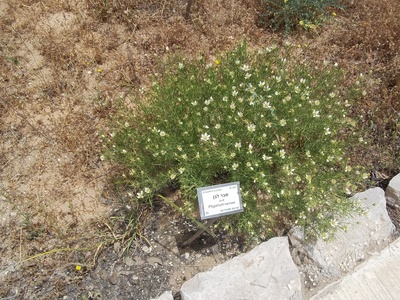
Harmal
Evergreen, aromatic shrub rich in alkaloids used in folk medicine. Widespread on rocky desert slopes, contributing to local ecological diversity.
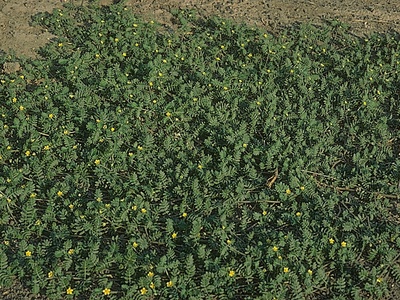
Puncture vine
Low prostrate herb with spiny fruit that can injure animals and bike tires. Used in traditional medicine but often regarded as a troublesome weed.
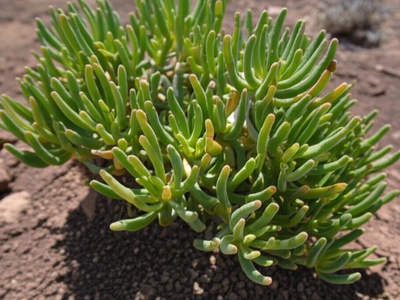
Balsam spurge
Succulent shrub with sticky sap used in folk remedies and as fuel. Thrives on coastal rocks and arid slopes; sap can cause skin irritation.
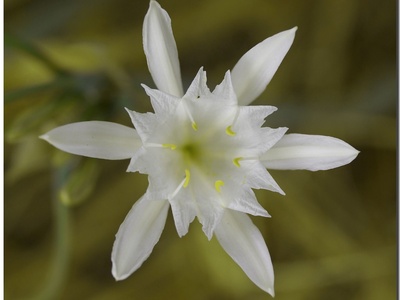
Sea daffodil
Elegant white-flowered bulbous plant growing on shorelines. Its large blooms attract pollinators and help bind coastal sands, albeit vulnerable to development.
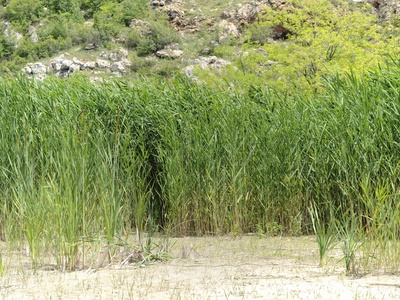
Common reed
Large perennial reed forming dense belts at freshwater sites. Provides nesting habitat for birds, stabilizes margins, and has local uses in thatching and craft.
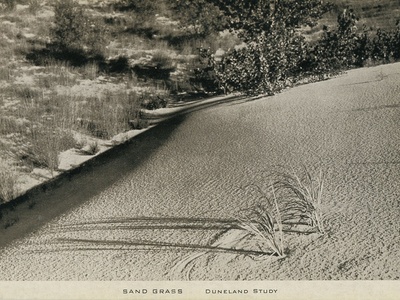
Sand grass
Tufted perennial grass adapted to shifting sands. It helps stabilize dune edges and offers seasonal forage for desert herbivores.
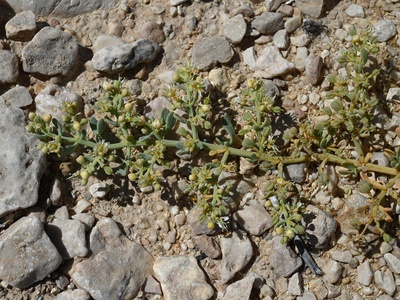
Tetraena
Low, fleshy shrub adapted to hypersaline flats and rocky sabkhas. A defining plant of coastal saline deserts, tolerating high soil salinity and harsh conditions.
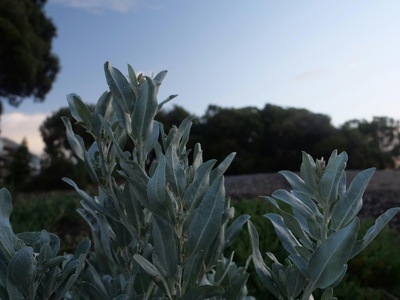
Saltbush
Leafy saltbush that tolerates and accumulates salts. Important as forage in salty lands and in rehabilitating salt-affected soils along coasts and inland flats.
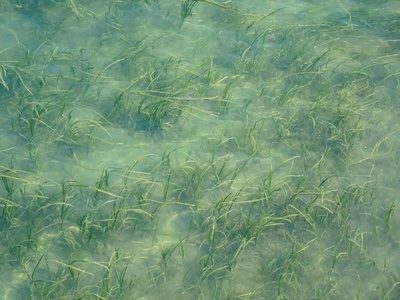
Seagrass (paddleweed)
Small-leaved seagrass forming meadows in shallow bays. Essential nursery habitat for fish and invertebrates, stabilizes sediments and stores blue carbon.
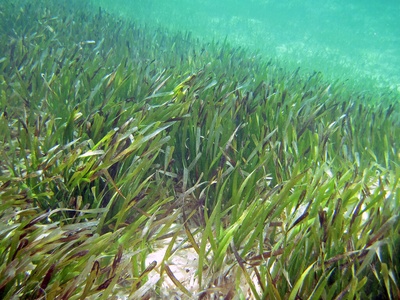
Turtle grass
Robust seagrass forming dense meadows in sheltered bays. Supports marine life, stabilizes sediments, and serves as forage for marine turtles and dugongs where present.
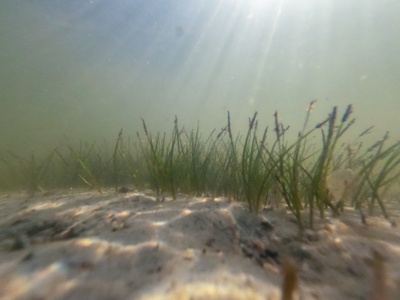
Shoalgrass
A rapid-growing seagrass common in intertidal flats and shallow bays. It provides important habitat for juvenile fish and contributes to coastal productivity.
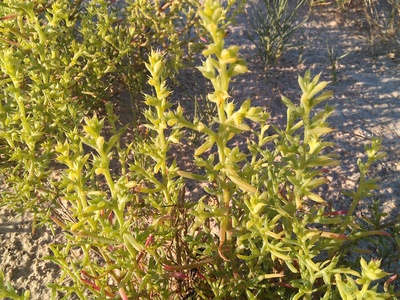
Saltwort
Spiky, shrub-like halophyte common across saline deserts. Used as emergency forage, it tolerates high salinity and helps bind loose soils.
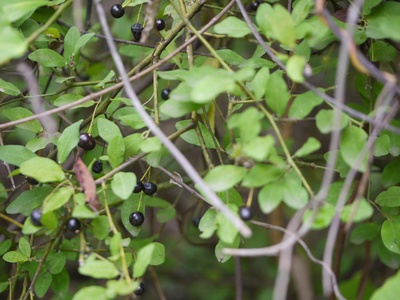
Caper bush
Spiny shrub with small edible buds and fruits. Valued as a food and medicinal plant, it thrives on poor, rocky soils in arid zones.
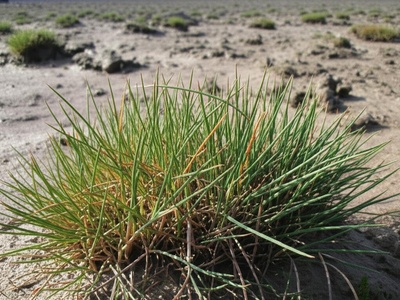
Sabkha grass
Low, tufted grass specialized for saline flats. It stabilizes salty substrates and supports grazing by adapted herbivores in coastal marshes.
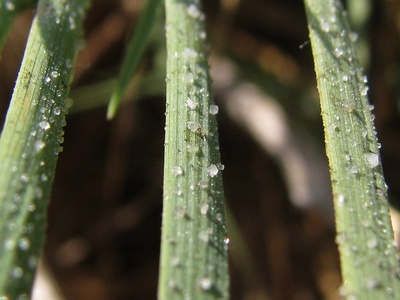
Saltgrass
Hardy perennial grass occupying shallow soils and stony plains. Provides seasonal forage and helps reduce surface erosion in arid landscapes.
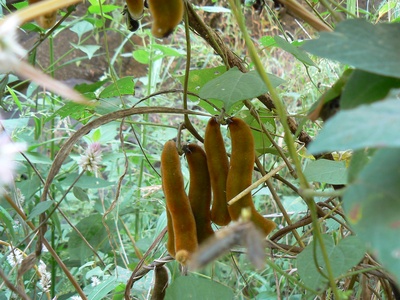
Velvet vine
Perennial climbing vine with fuzzy leaves and milky sap. Used in traditional remedies and common on sandy and disturbed sites across arid areas.
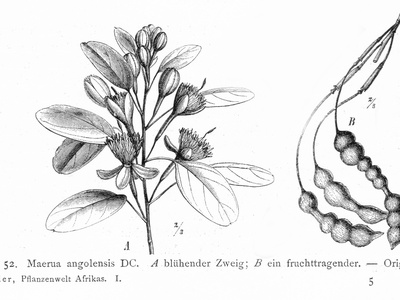
Maerua
Multi-stemmed shrub or small tree producing small edible fruits. Important for camel and goat forage, with several traditional medicinal uses among local communities.
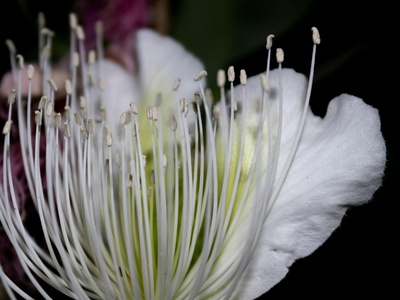
Caper
Characteristic rock-dwelling plant whose pickled flower buds are a culinary condiment. Tolerant of poor soils and valued in traditional remedies and local diets.
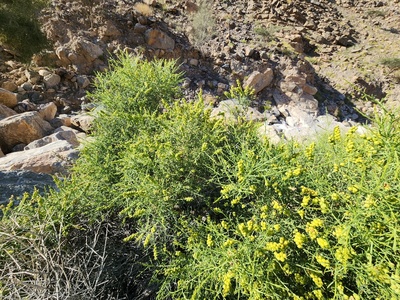
Ochradenus
Compact shrub bearing fleshy fruits eaten by birds and mammals. Well adapted to gravelly desert soils and contributes to food webs for wildlife.
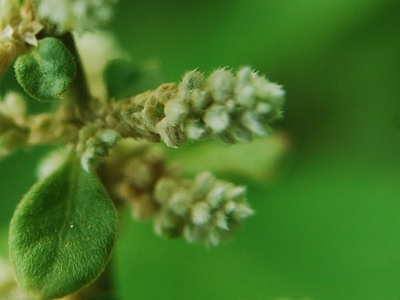
Aerva
Small perennial herb with cottony seeds often found on sandy ground. Used in folk medicine and as an early colonizer of disturbed arid soils.
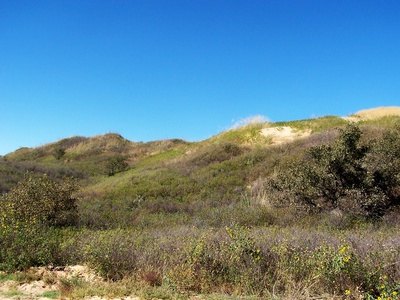
Dune stabilizer
Leafless, deep-rooted shrub key to dune stabilization. Twigs and roots have traditional uses and it provides shelter and forage in sandy deserts.
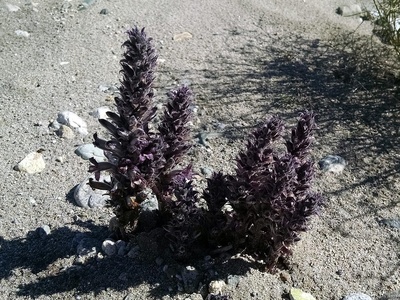
Desert broomrape
Leafless parasitic plant that taps roots of desert shrubs. Produces fleshy flowering stems harvested for traditional medicinal properties in the region.
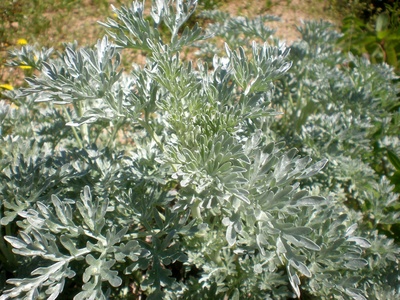
Wormwood
Aromatic, silvery shrub common on rocky desert slopes. Employed in traditional medicine and used as occasional browse by grazing animals.
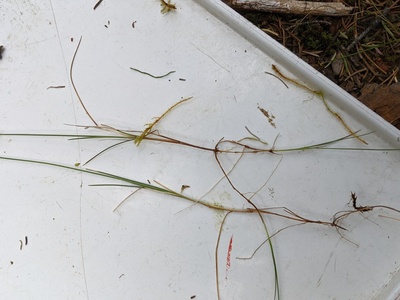
Sedge
Widespread sedge growing in moist spots and disturbed fields. Known as a persistent weed but also used in folk remedies for its aromatic tubers.

Snake rush
Spiny-tipped rush occupying saline wetlands and coastal margins. Helps stabilize muddy substrates and provides cover for small fauna.
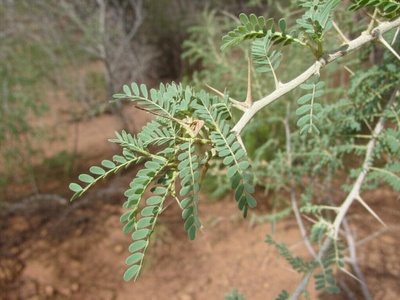
Spiny indigo
Spiny leguminous shrub that fixes nitrogen, improving poor soils. Historically used in traditional medicine and provides seasonal forage for wildlife and livestock.

Blister dock
Annual herb with tangy, edible leaves eaten in local cuisines. Rapid-growing after rains, it occupies disturbed ground and wadi beds.
